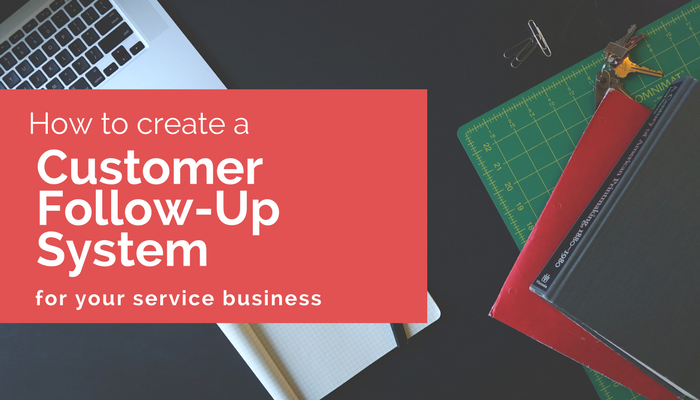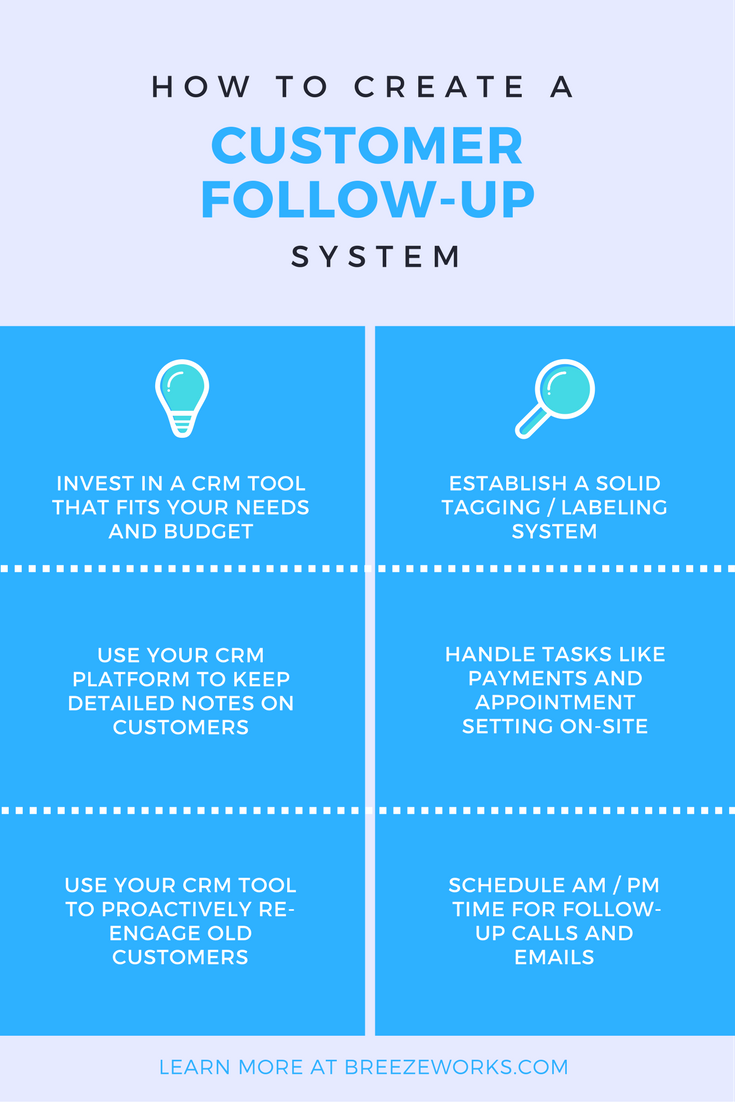When you’re busy running a small business, it can be all-too-easy for things to fall through the cracks — unpaid invoices, follow-up phone calls, and yes, even new leads. In fact, lack of communication is a huge cause of lost business for many service businesses.
Of course, nobody intends to ignore potential customers, but the busier things get, the more it’s bound to happen. This is why it’s important to create a customer follow-up system for your business. Best of all? Having a customer follow-up system in place will make it easier for you to scale your business and properly train new employees in the future.
1. Decide on a CRM tracking system
No matter how small your business, it’s important to have a customer relationship management (CRM) system in place. Yes, even if you’re a solopreneur! We may be a little biased, but we highly recommend checking out Breezeworks. Built (and priced!) for small service businesses, Breezeworks integrates your customer information, jobs, notes, estimates, invoices and payments into an easy-to-use app. Click here for a free 14 day trial – no credit card needed.
2. Establish a good labeling system
A solid customer follow-up system relies heavily on detailed tags. This will make it easier for you and your team to quickly surface jobs based on current status. On Breezeworks, this feature is called Tagging and is fully customizable. Your tags may include things like:
- Fresh Lead
– Left Message
– Needs Callback
– Scheduled Appointment
– Awaiting Estimate
– Job in Progress
– To Be Invoiced
– Awaiting Payment
– 2 Week Follow-Up
3. Use your CRM system to keep detailed notes on each customer
If you’re hired by customer referral to do an air duct cleaning at Jane Doe’s condo, you may wish to note the name of the friend who referred you, door codes for Jane’s building, the name of her dog, notes on her HVAC system for future reference, year of service (i.e. 2017 Air Duct Cleaning), and job notes. This information will make future jobs easier, enabling you to provide Jane with personalized service.
4. Handle scheduling and invoicing while you’re still at the job site
Handling small administrative tasks on-site can help save you countless hours. Supply your team with tablets so they’re able to generate invoices and estimates from the field and collect payment on-site. If a follow-up appointment is needed, get that taken care of before you leave as well. These small activities will only add a few minutes to each job and will free up your time, enabling you to focus on important things like re-engaging customers.
5. Use your database to re-engage customers
In addition to reaching out 1-2 weeks after job completion to check in and encourage happy customers to leave a positive Yelp review, you should also utilize your CRM database to proactively re-engage customers in the future. For example, 2-3 years from now, you can surface jobs tagged “2017 Air Duct Cleaning” and send Jane Doe a reminder that it’s time to get her air duct system cleaned again.
6. Schedule time in the morning and evening for customer follow-up
It’s time to break the habit of squeezing customer follow-up in between appointments! Reserve an AM slot for things like responding to emails and sending over estimates, and set a PM slot for returning phone calls. Wait until you’re in front of your laptop / tablet to do follow-up so you can take detailed notes in your CRM system.






